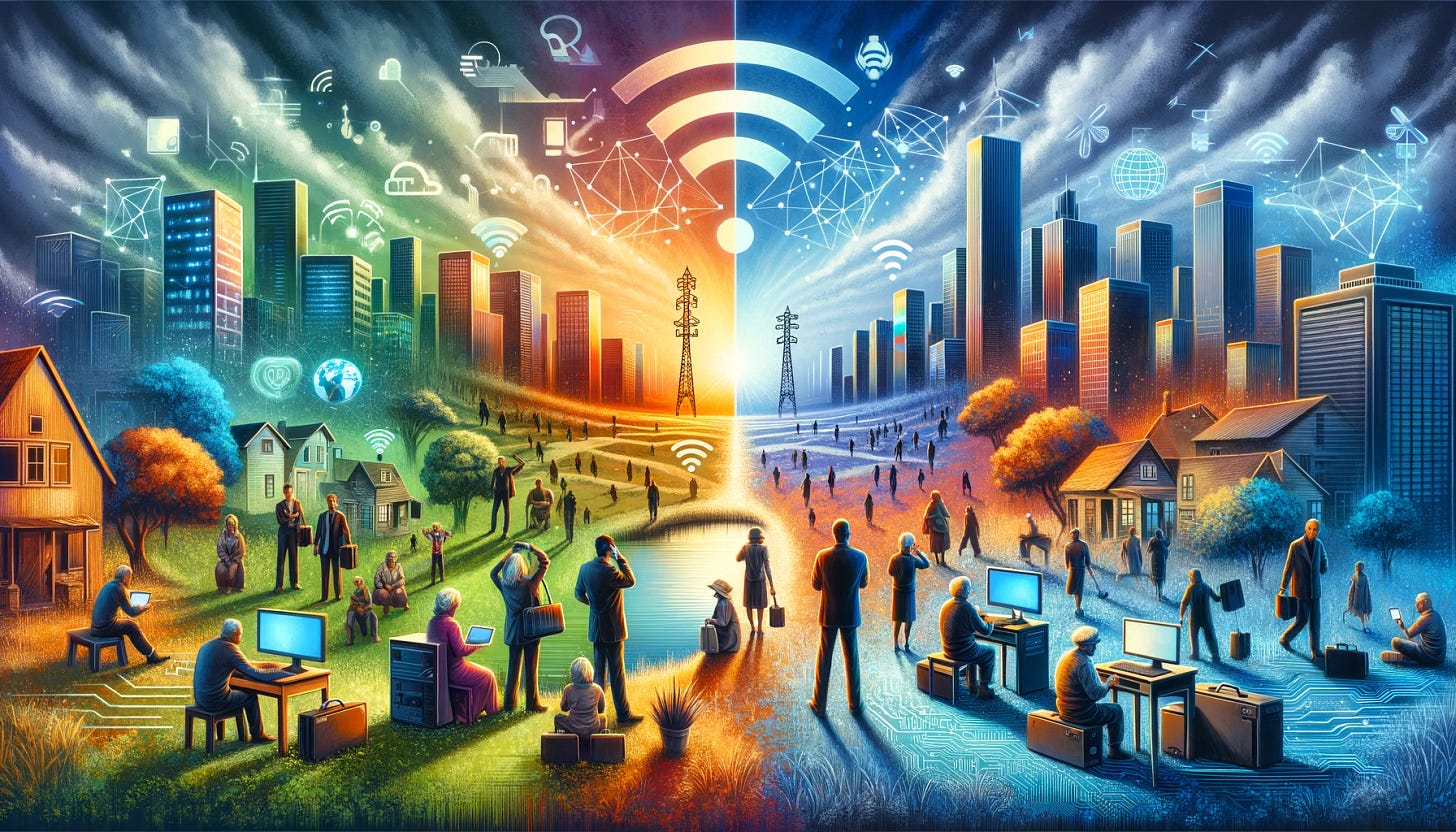Could Generative AI broaden the Digital Divide?
Impact of AI on digital inequality and how we can help
For many of us, these are exciting, albeit weird, times in generative artificial intelligence. We've seen AI advance from autocorrect to generating content at the level of a PhD candidate.
Some of us have legitimate concerns about copyright, academic integrity, misinformation, and environmental strain. We will need to learn to navigate these valid concerns, likely through trial and error. All in all, many of us will be okay and learn to adapt to our brave new world; some will thrive, and some will begrudgingly comply. Many of us have reliable internet service and the digital acumen to benefit from our new virtual collaborators. However, for nearly one-third of Canada's population who do not have the same access to high-speed Internet (50 Mbps) or those who lack digital confidence, this advancement in technology could widen the gap between the digital haves and have-nots.
The term digital divide describes the schism between those with the means to access technology and those who do not have broadband access or the technical literacy to navigate the digital world. These individuals include those who are separated by income, who cannot afford the price of high-speed connection, those separated by geography, such as those in rural locations or First Nations Reserves without broadband infrastructure, and those who were not born digital natives and may not have had the same exposure to digital literacy as those born during the digital age. As almost every essential service has moved online, lacking the means to connect can hurt one's quality of life.
In 2020, the pandemic widened and deepened this divide. Many households surviving with limited broadband or supplementing their digital access outside the home suddenly became disadvantaged when everything—school, work, and social lives—moved exclusively online. Slower connectivity—with more individuals sharing broadband—and digital overload impacted many Canadians. Today, GenAI and the rapid advancements we're seeing may also impact those already disadvantaged.
Those who are left behind now will be further behind as many of us embark on the new frontier as soon as we are all expected to be literate in GenAI. This leaves out the disconnected and those who lack the confidence or faith in technology to embrace and fully utilize GenAi meaningfully. I don't buy into the idea that AI will replace anyone's jobs, but I believe many jobs will be replaced, not by AI, but by those comfortable and literate in AI. This will instigate a larger tectonic shift in the digital haves and have-nots.
Right now, we have an opportunity for leaders, educators, librarians, and public policymakers to consider ways to bridge this division. Approaches to enhancing this literacy can help bridge this divide. Public awareness, for starters, when we have more information, we are more empowered to educate ourselves. People need to be educated about the risks and benefits of GenAI. Once the revolution is demystified, it becomes less scary, and people feel more empowered and confident in the technology.
Community-driven tech centres, which, with funding and support from all levels of government, could be offered through our public and school libraries. Just like libraries forged ahead when the Internet was becoming ubiquitous - but rearranging their furniture and adding computers back in the early 2000s - these community hubs can help bridge this latest technological revolution.
Finally, digital literacy education is imperative in work, school, and wherever it can be fostered. Ontario finally announced a long-over-due mandatory financial literacy assessment. Digital literacy can arguably influence an individual's well-being and life preparation nearly as significantly as financial literacy.
As exciting as the new advancements are, we should be wary of how they will impact those already left behind or those on the periphery who risk missing out.



